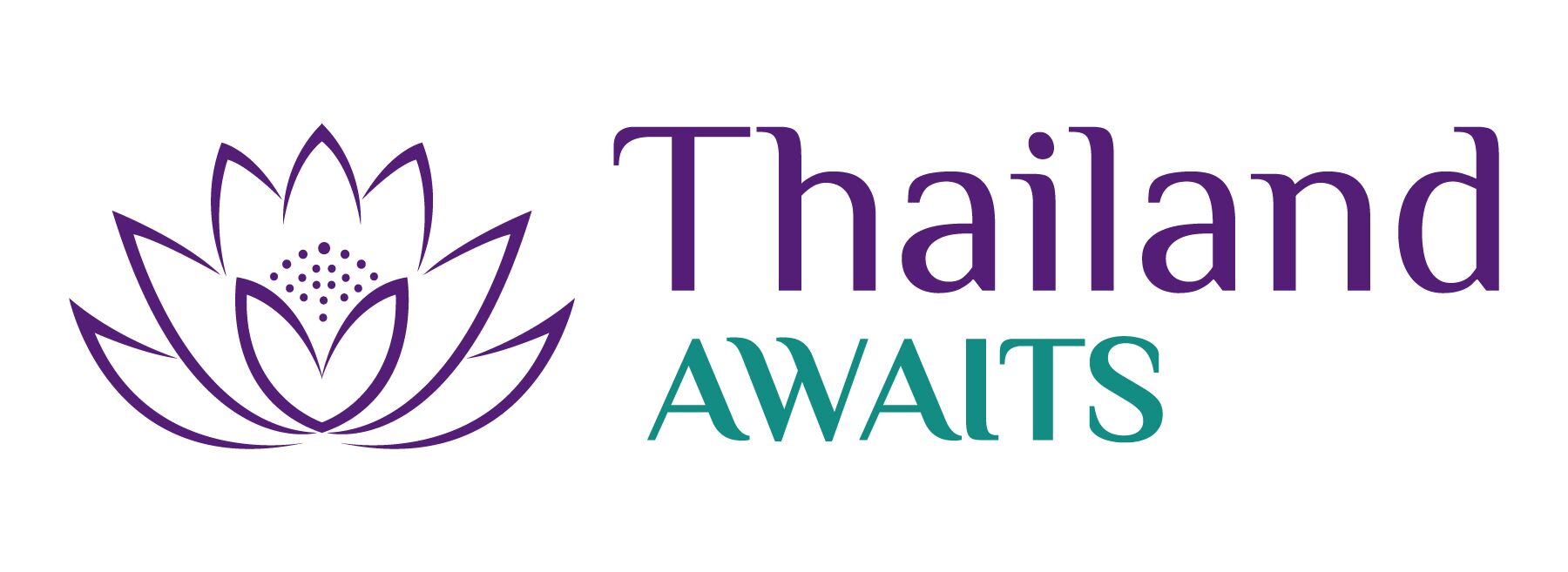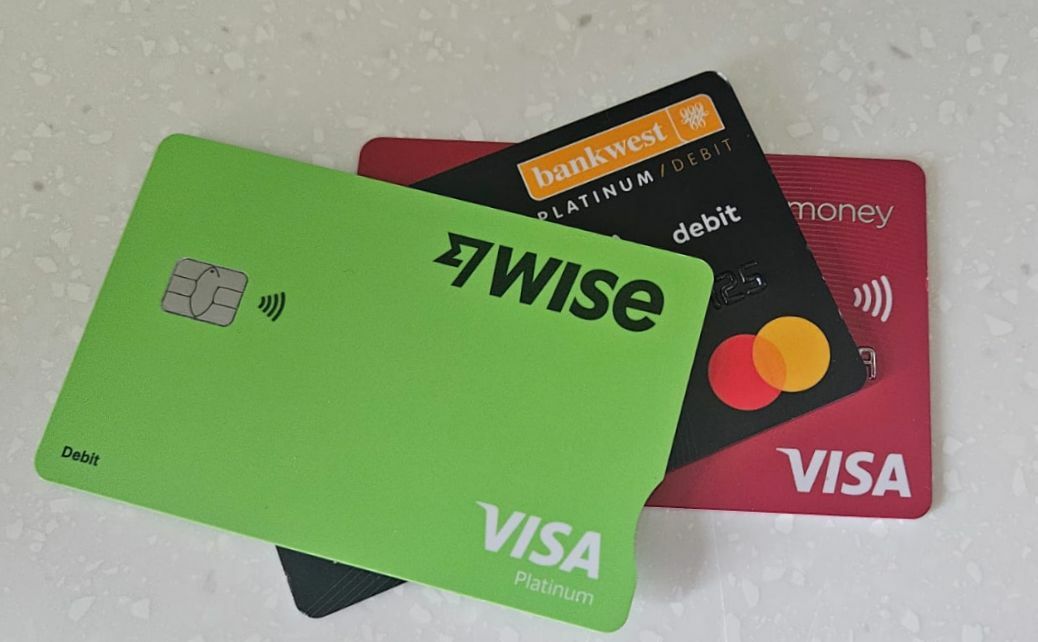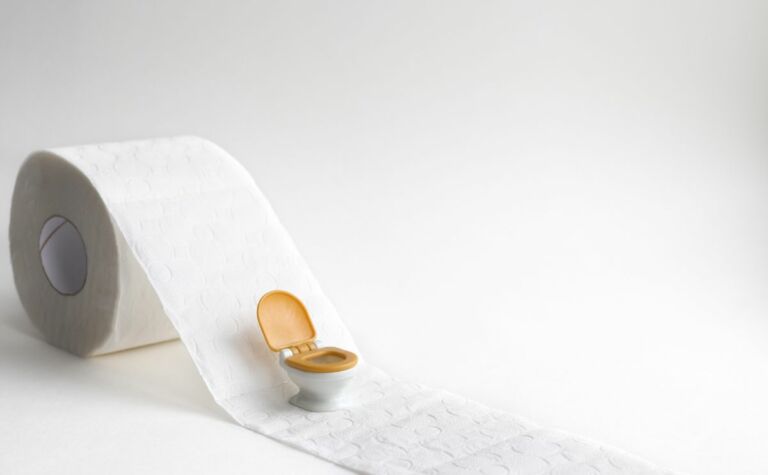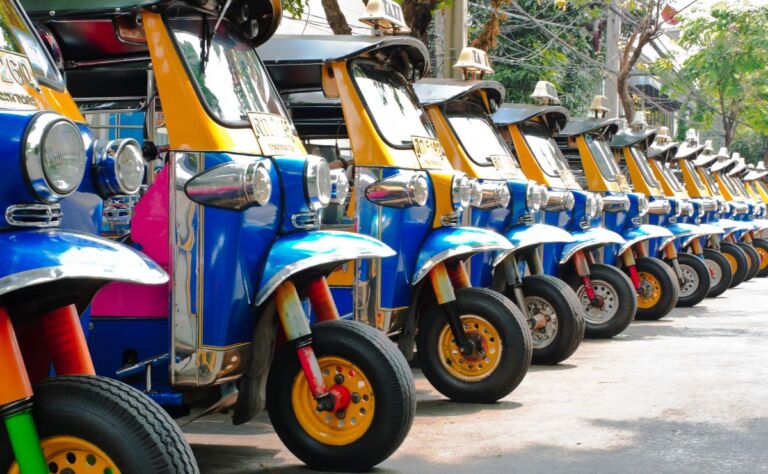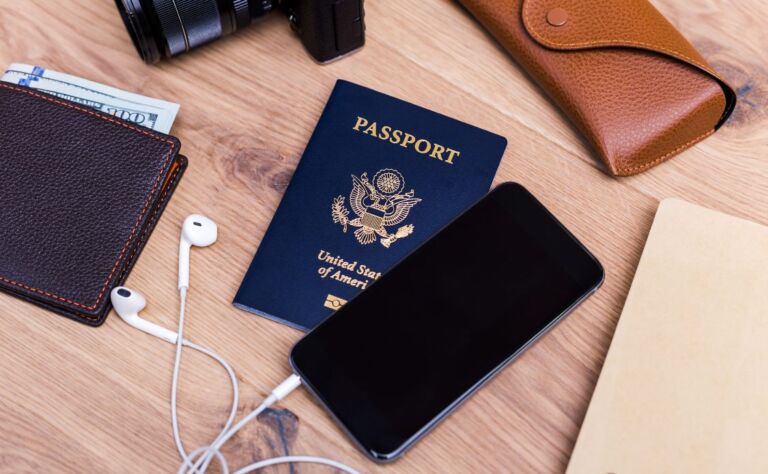Cash or Card in Thailand? Your Complete Guide to Spending Baht
You’ll find money matters topping the list of questions on any Thailand travel forum; cash or card? Getting your finances sorted is key to a stress-free trip. So, let’s talk baht! With two decades of Thai adventures under my belt, I’ve got the lowdown on everything from currency to clever spending. Let’s make sure you get the most out of your hard-earned cash.
This page contains affiliate links. Please see our disclosure policy for more details.
Understanding The Thai Baht: Your Guide To Thailand’s Currency
The local currency in Thailand is the Thai Baht (symbol ฿). The denominations are:
- Coins: 1, 2, 5, 10
- Notes: 20, 50, 100, 500, 1000
However, 1 baht isn’t the smallest amount. One baht is made up of 100 satangs, similar to 100 cents making up one dollar. There are two satang coins, 25 satangs and 50 satangs. They’re not widely used anymore. Some supermarkets still price items with a .25 or .75 amount, and if the check-out cashier doesn’t have any satang coins, they’ll round the price up.
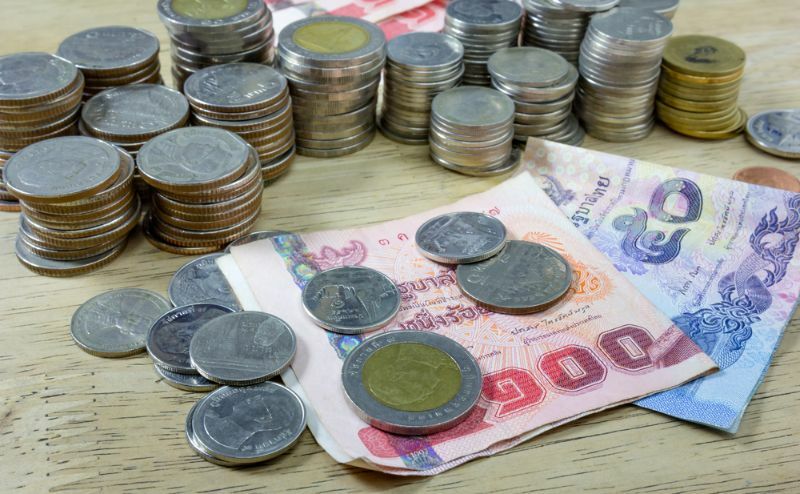
At the time of writing this in July 2024, the currency conversion rates are:
- 1 AUD = 24.38 THB
- 1 USD = 36.14 THB
- 1 EUR = 39.38 THB
- 1 GBP = 46.86 THB
- 1 NZD = 22.29 THB
The best way to remember the cost of things is to remember that 100 TBH equals:
- AUD 4.08
- USD 2.75
- EUR 2.54
- GBP 2.15
- NZD 4.49
If this is your first trip to Thailand our 41 tips for first time visitors is a must read.
Exchange Rates And Where To Get The Best Deals
I think the best option when travelling to Thailand is to exchange a small amount of Thai Baht in your home country to have on you when you arrive. This will cover things like taxis, water or snacks and anything you might need before you get to your hotel.
Bring the rest of your cash in your home currency, you can easily convert it into Thai baht everywhere and will get a better rate than at home.
If you do want to exchange some money on arrival head to the lower floor of the airport, the same level as the train station and you will find the best rates. Often they are the same as the rates in town.
Finding exchange booths
In the major tourist areas, there are exchange booths on every street corner. They’re very competitive with each other, and they’re not a bad place to exchange your cash; just be sure to check if they have any service fees.
Note: You may need to present your passport when you exchange currency. We have had times when it was requested and other times we were not asked.
My favourite place to exchange money is a chain called Superich. They have branches everywhere.
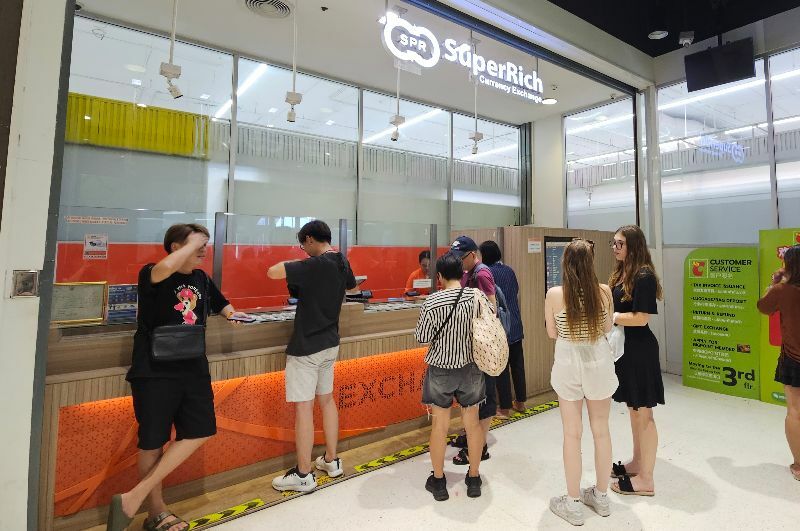
They have a cute story, years ago, before currency exchange was legal, Superrich sold eggs at a shopfront, if you went behind the curtain you could exchange money. Today, everything is legal and above board, and they have some of the best rates in the country and will also convert many currencies that others won’t.
Avoid changing your money at a hotel front desk. Their exchange rates are notoriously worse than everywhere else, and they may even charge a fee.
Where to Break a 1,000 Baht Note
Unless you withdraw denominations ending in 100s from an ATM, you’ll most likely get a fistful of 1,000 baht notes. The challenge with these is that not everyone is prepared to break them. Many vendors don’t even have enough change on hand to do this. Taxi drivers will refuse or suggest they keep the change ‘as a tip’ (one of the many taxi scams prevalent in Thailand).
Please don’t try to pay for a local bus or meal at a street vendor or a local store unless you’re spending over 100-200 baht in one transaction.
Everyone in Thailand knows that a 7/11 store will change the 1,000 baht, I’ve even seen people buy something worth 10 baht and getting 990 baht in change (try not to do this if you can help it).
The other place I can always get change is at a coffee shop chain (Amazon or Inthanin), as two coffees are more than 150 baht anyway. Toll gates and ticket counters at BTS and MRT stations will also change them.
Cash or Card in Thailand
Before Covid-19, cash was king. We’d all walk around with wads of it in our wallets and pay for most things this way. During the pandemic, when the internet went wild, stating you could catch the virus from notes and coins, everyone in Thailand, from luxury hotels to local street vendors, went cashless.
Things have relaxed now, and cash is back in style. Although some shops accept ‘card or online payments’ only, they have signs indicating that before you enter. These days, I still carry cash with me, but it’s not my first way of making payments.
When I Use Cash
I always keep some notes and coins with me. While locals can pay using digital methods this is not an option for short term visitors.
You will need cash for:
- Most street food vendors outside of the major tourist areas prefer cash, and most of them cannot accept card payments.
- Cash is also your best option for the Express boats on the Chao Phraya River and the Saen Saep Canal where your fare is under 20 baht.
- NIght markets vendors rarely accept cards unless you are buying expensive items.
What is pay by QR code?
As soon as you head to the shops or night markets, you will see people paying by QR code. This form of payment is huge here in Thailand, except at 7/11 (the most prominent mini mart in Thailand with over 14,500 outlets), where they still don’t accept it. The catch is that you can only set up one of these accounts if you have a Thai Bank account.
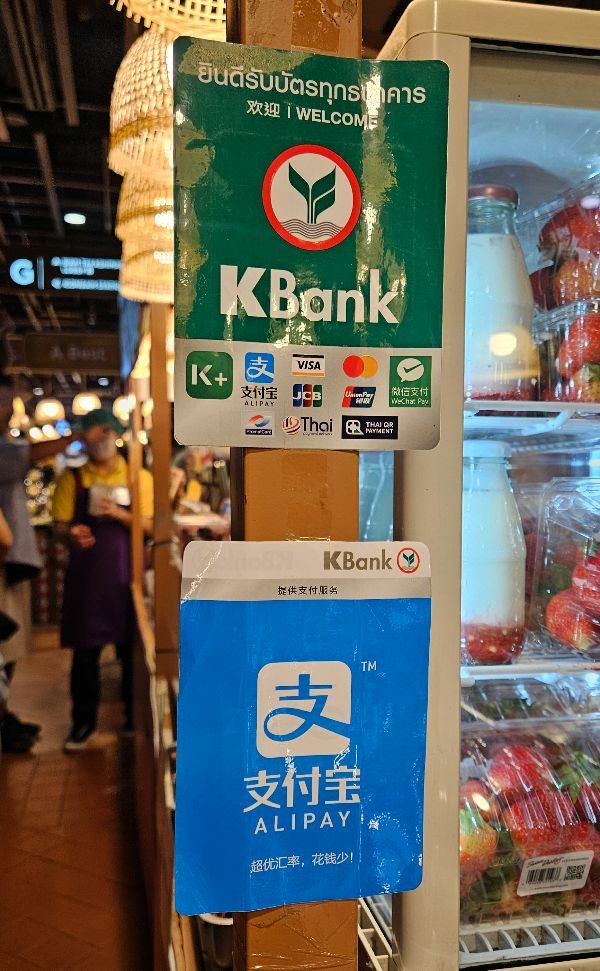
Opening a local bank account is not impossible, but it’s become extremely difficult unless you have a work permit or other official Thai documents. See below for more details.
Using credit cards and debit cards in Thailand
You can use foreign debit and credit cards here in Thailand, provided they have a chip. Almost all cards do these days but if you are not sure about your card talk to your bank before you depart and fully understand what cards of theirs are best to use abroad.
Debit Cards
Your regular local bank debit card won’t work in Thailand unless it’s one with a Mastercard or Visa symbol on it. You will also need to set up a four-digit PIN code. This is standard in most countries, but some regions use five—or six-digit PINs, so we thought we should mention it.
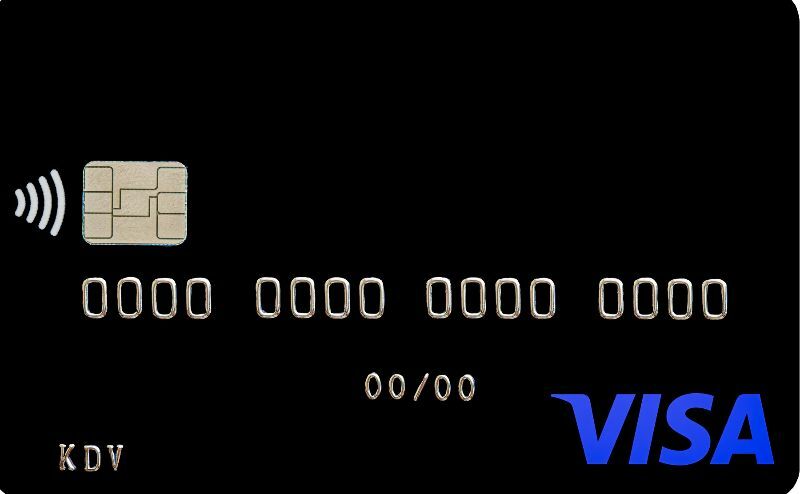
Some banks offer fee-free debit cards, which include free foreign transactions and no change in your bank ATM withdrawals. I’ve never had a problem using my debit card anywhere that accepts cards; however, some smaller stores will only accept credit cards and not debit cards, even if the card says Visa or Mastercard.
Credit cards
Credit cards are a very popular form of payment in shopping malls, hotels and larger cafes and restaurants, especially in Bangkok and other main cities. Many shops in Thailand require a minimum purchase (often starting at 500 baht A$20).
Credit cards tend to have the highest fees and interest rates. Be sure to check with your bank before you depart to find out what the fees are on your cards and when they apply.
Some banks offer fee-free debit cards with free foreign transactions and no charges for ATM withdrawals. I’ve never had a problem using my debit card anywhere that accepts cards; however, some smaller stores only accept credit cards, not debit cards, even if it’s Visa or Mastercard branded debit card.
How To Minimise ATM Fees While Travelling In Thailand
You may wonder why everyone is so concerned with bringing cash to Thailand. Well basically withdrawing money from an ATM in Thailand can be costly, and the first of these cost cannot be avoided.
The easiest fee to understand is the 220 baht, a flat fee charged per transaction by Thai banks, for any overseas account withdrawal.
This fee can’t be avoided, so my tip is to withdraw larger amounts less often. The catch here is that the maximum amount you can withdraw in a single transaction is between 25,000 and 30,000 baht (A$1,000–$1,250).
Krungsri, a popular Thai bank, (aka the yellow one) allows withdrawals of up to 30,000 baht per transaction at their ATM.
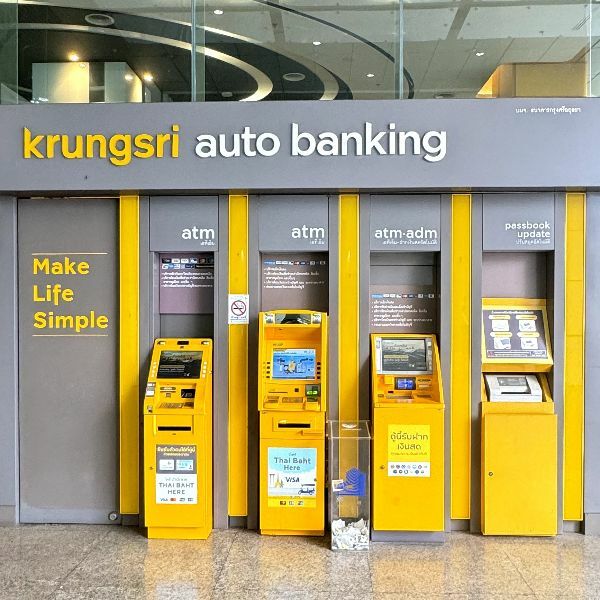
Depending on your bank and the number of transactions you perform you will likely also be slugged fees by your own bank. If you are travelleing for more than a week its well worth doing some research to do before you leave home.
Other fees to look at may include:
- A foreign currency conversion fees (a percentage of the total amount)
- A cash advance fee (also a percentage; this fee will 100% apply if you use your credit card to withdraw cash).
Your bank will likely not offer the best exchange rates so choosing Thai baht rather than your home currency can also help you avoid unfavorable exchange rates.
Tip: When making a card payment you will be asked if you want the change in local currency (TBH) or your home currency. Always choose local currency.
Ideally, you want to travel with a (credit or debit) Visa or MasterCard with zero foreign transaction ATM fees. These do exist, but they can be hard to find, and the number of fee free accounts seems to be reducing every year. They are more common with smaller, local banks or online banks. Latitude 28° Mastercard is one of the most popular.
Some Aussie accounts that offer these types of cards include; Bankwest, Westpac, NAB, and Coles. However you have to read the find print, each of these banks will have a variety of conditions for different products. Sadly we are not across bank offerings from other countries.
So what’s another solution?
Open a Wise Account
Wise is the world’s most well-known and used transferring company. I’d be lost without my Wise account, which has saved me thousands in fees over my years of travelling, not just to Thailand but worldwide. The accounts are available to everyone, and they’re excellent for international travellers, as you can hold funds in a number of currencies and use the Wise branded debit MasterCard to withdraw from ATMs worldwide.
The only place I have had trouble using Wise is the Gourmet Market. I have tried at several branches and it never works.
I transfer money from my local Australian account into my Wise-branded Australian account and keep a balance in my Wise US account. I then use my Wise debit MasterCard at an ATM to withdraw the funds for wherever I am—easy!
Revolut is another popular e-money account that works in a similar way to Wise.
How to Get the Most Bang for Your Baht: When and Where to Barter
Another way to save money in Thailand is by bartering for goods and services. It may feel uncomfortable or foreign for some Westerners to participate, but it’s legit, and I’ve saved thousands this way.
When Not to Barter
Okay, so you can’t go into every shop and expect to get money off. Department stores, liquor stores, and branded mini-marts like 7/11 or Family Mart are off-limits. To keep it simple, if it has a marked price, it can’t be haggled. Some department stores may have a promotion where you can ask for a discount, but it will be heavily promoted in clear signage throughout the store.
Also, please don’t barter with street food vendors. These people work 12+ hours a day, cooking in the heat, often to feed their entire families. If they charge 40–60 baht for a meal, don’t disrespect them by asking for a lower price.
With common sense, you can pick and choose when to barter.
When You Can Barter
For me, if I don’t see a price tag, the item is fair game. Of course, Thailand’s many local markets are the easiest place to put this into practice; unless the store has a “no bartering” sign, all bets are off, and you can have fun.
My tip is to ask them the price, then start by offering them half of what they state. They’ll return with a counteroffer, and you may get one more counter before it’s over. Remember to do all of this with a massive smile on your face.
Money in Thailand
There you go! Once you get your head around the different denominations and work out the exchange rate in your head, you’re all good to go.
Be sure to check with your bank about the fees on all your cards, and follow my tips above to minimise them where you can.
The Thailand economy needs the help of tourist dollars, so feel free to spend up a storm while you’re here 🙂
Got a question – Head over to our Facebook Group “Thailand Obsessed” and we will do our best to help
